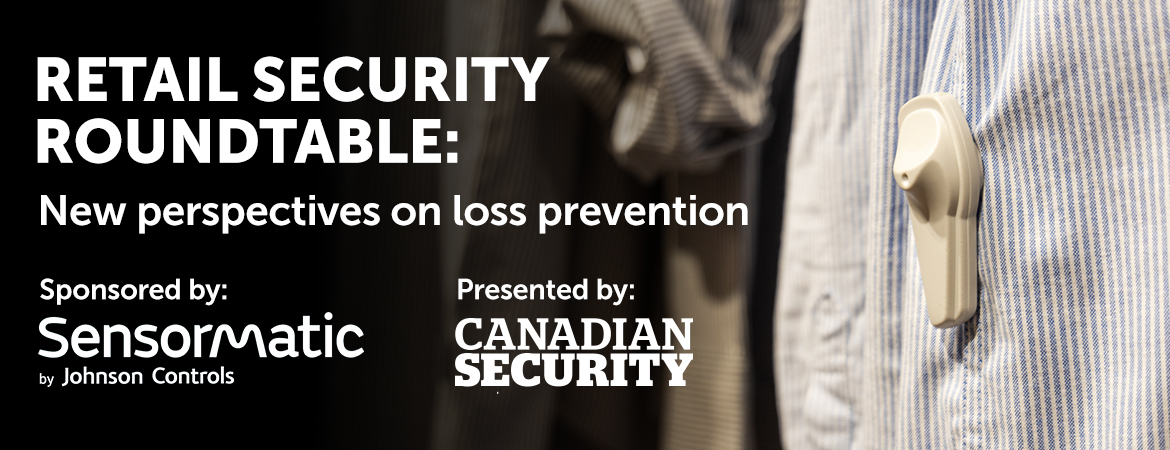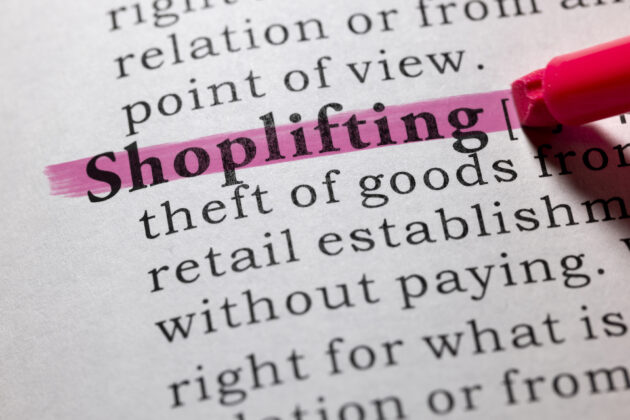
Retail Security Roundtable: New perspectives on loss prevention
By Canadian Security Staff
News Retail Security Roundtable
The videos are shocking — often featuring dozens of people descending on retail stores, grabbing as much merchandise as they can carry, and fleeing out the doors in front of startled customers and staff.
And while Tony Hunt, general manager, loss prevention at London Drugs, called the incidents happening in the United States “very disturbing” he isn’t seeing the same level of organized behaviour on this side of the border.
“Flashmob sort of approaches or aggressive theft gangs working in groups have been an isolated phenomenon,” said Hunt. “Usually, we’ve been able to respond with law enforcement, working together in retail, to identify them and have those situations resolved pretty quickly.”
But it doesn’t mean Canada is immune. Hunt talked about some unsettling incidents in Alberta in the last few years involving two groups of young offenders who were striking stores with aggressive tactics to steal electronics — including using pepper spray in one incident to clear the area.
Hunt has also seen a rise in the phenomenon of a “shelf sweep,” where an individual will come in and take a large amount of product off the shelf and stuff it into a hockey bag or similar carrier and walk out the door.
“That certainly happens, and that’s usually ‘steal to order,’” he said. “They’re stealing that for resale or a fence.”
To combat theft, retailers are turning to technology and new practices to make it more difficult for criminals, according to Rui Rodrigues, executive advisor, loss prevention and risk management, at the Retail Council of Canada.
Some of the technology — such as showcase alarming if someone opens a display — is not new, he said. Other efforts are very industry specific, like controlled entrances being deployed at some storefronts.
“We’ve seen that in the liquor industry in Canada, where Crown corporations have gone to a model of controlled entrances, ID and doing all of that,” said Rodrigues.
“Retailers, right now, are leveraging technology and people to combat losses, as well as aggressive behaviour,” he said, because he’s hearing from retailers that their losses this year are “far greater” than in the past.
That includes not just the cost of the stolen goods, but also increased labour costs for security guards, paid duty officers and other training measures that can erode profitability, said Rodrigues during the roundtable discussion sponsored by Sensormatic and presented by Canadian Security in partnership with the Retail Council of Canada.
Tools and technology
Hunt said it’s an “exciting time” when it comes to the evolution of tools and technology to help retailers. Over the last few years, a lot of effort went into developing systems to support operations through the pandemic, he said.
“You’re talking about everything from detecting potential cases of COVID coming into a building, new types of visitor login systems… a lot of different technology for remote access and remote security,” he said. Now, the focus is shifting back to dealing with organized crime, aggressive threats, and violence and abuse directed at staff, all while ensuring it doesn’t erode the customer experience.
“You see a lot of new technologies coming forward around showcases that are locked until they know who the customer is,” said Hunt, including the use of artificial intelligence (AI), smarter locks and shopping carts that will seize up if someone leaves the store without deactivation at point of sale.
The goal is to display products in a way that’s “enticing and comfortable for customers, but not end up losing it,” he said.
Gordon Smith, country manager, Canada, for Sensormatic, said COVID accelerated the adoption of technology, particularly among more recent adopters like operations and marketing.
“What you’re seeing businesses do now is look for technology to give them predictive analysis and analytics on what the store is going to do tomorrow,” he said.
That can be useful when it comes to combatting organized retail crime, because patterns can be identified — leading to more effective deployment of resources like guards or moving merchandise in the store accordingly, said Smith.
“What you’re seeing businesses do now is look for technology to give them predictive analysis and analytics on what the store is going to do tomorrow.” — Gordon Smith, Sensormatic
Risks to workers
Rodrigues said violence and aggressive behaviour that began rising during the pandemic has persisted, with criminals becoming more brazen.
“We see incidents daily of weapons being utilized, which is unprecedented for us in retail if you go back four or five years,” he said, noting that bail reform is “not working in our favour” while drug abuse and opioids are additional contributing factors.
During COVID, many loss prevention workers adopted a hands-off approach with physical distancing and masking rules, he said. Going back to a more hands-on model carries even more risk with this escalating behaviour.
“Are they trained to deal with what we’re seeing out there? No,” said Rodrigues. “The reality is we see more incidents that they’re encountering which puts them in harm’s way.”
“We see incidents daily of weapons being utilized, which is unprecedented for us in retail.” — Rui Rodrigues, RCC
At London Drugs, Hunt said he watched a societal shift unfold during COVID — starting with spitting on people — that kept creeping into public spaces including bus stops, grocery stores and other types of retail.
“We have seen a pretty consistent escalation in abuse, violence, threats — involving criminal cases and also some seemingly innocuous regular workplace situations that you’d run into between employees and customers,” he said. “We shouldn’t have a society where somebody can ask somebody, ‘Hey, can I help with you something?’ and (at) the end they get back a racist slur or a threat or, worse, an assault.”
These situations can be vexing for security professionals because they are so random, he said. “Normal pre-assault cues or escalation does not present in a lot of these situations.”
The answer has been a lot of training on communication tactics, de-escalation techniques and management of aggressive behaviour, said Hunt, noting that the Retail Council of Canada has tips on their websites to deal with unruly customers.
Hunt said there are more security professionals now who are hands on and evolved in arrest situations.
“If it just becomes, you know, wave at them and send the police later for every single incident, things can get out of hand,” he said. “We’re trying to avail ourselves of the justice system that’s available to us to try and protect our people because this is, first and foremost, a people issue.”
Collaboration among retailers, law enforcement
While retailers are able to work together effectively, their hands can often be tied, said Hunt.
“There’s a lot of privacy provisions at this point that make it difficult to share intelligence about suspected behaviour,” he said. For example, if they think an individual is a problem, they can’t just put a picture out on social media and say, “Hey, I think this guy is stealing from everybody in this one street downtown.”
But retailers, police and the community have been able to work together effectively to combat crime in very specific areas where theft has become very prevalent and is becoming a public risk, said Hunt.
“We work with law enforcement and we put a lot of surveillance and a lot of reporting in place,” he said. “We arrest and charge known offenders and prolific offenders and get weapons off the street, and we do this in concert with other retailers.”
“We’re trying to … protect our people because this is, first and foremost, a people issue.” — Tony Hunt, London Drugs
He also noted that the justice system is set up to treat theft as a single, small individual incident — “at this point, stealing $4,000 worth of shelf sweep products out of a store is often considered the same offence as taking four chocolate bars and a yogurt.”
Rodrigues is hopeful bail reform will put a dent in the problem. Bill C-48 passed third reading in the House on Sept. 18 and second reading in the Senate on Sept. 21. It is currently listed as “consideration in committee.”
“We have criminals being arrested every single day and being released, again, due to the regulations we have in place. And they’re going back and verbally, physically assaulting that same retailer — and on top of that saying, ‘See? You can’t do anything,’” he said.
That’s very disheartening for an employee and a manager whose team just helped get the individual arrested, he said.
Technology versus law
Smith said one of the biggest frustrations for retailers is that while great technology exists, the legal system and privacy commissioners have it “locked down so tight.”
“We’re treated differently than criminals,” he said. “There’s so much information that we can give to law enforcement and the Crown to help close deals or close cases. But that’s information we can’t share.”
Tools like facial recognition technology simply can’t be used in Canada, he said. And while he sees the frustration on collaboration, because there’s always room for improvement, he thinks retailers in Canada are doing a pretty good job overall.
“There’s informal collaboration on, you know, what are you experiencing? What are you doing? What are some of the tools you’re using to help combat it? I commend the retailers for what they do,” he said, adding that organizations like the RCC are doing a “great job” of opening up lines of communication.
Print this page

